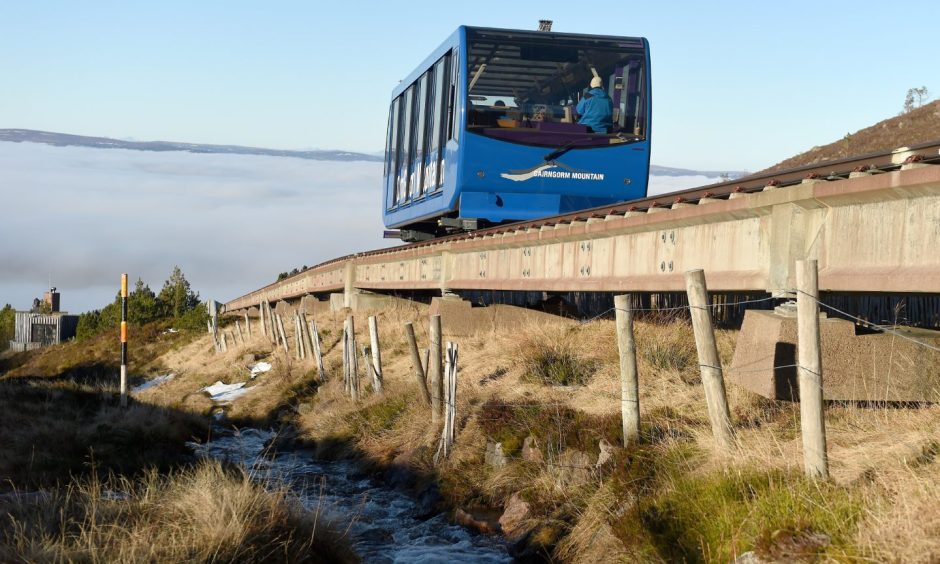The Cairngorm funicular has saddled taxpayers with millions of pounds worth of repair bills in its checkered history.
The cost led to some campaigners saying it’s time to cut the losses and scrap it.
The price of doing that would be millions – and we can reveal the price tag is even higher once the European small print is factored in.
How did it get to this point, and what are the cost implications either way?
How it started…
The UK’s highest mountain railway – first opened in 2001 – has been shut for much of the past six years.
Repairs completed in January 2023 came in at an eye-watering £25 million, more than the forecasted £16 million.
If that wasn’t bad enough, the funicular was taken out of action again just seven months later and is yet to reopen.
And its target date for returning to service – December 20 – has been pushed back again.
It’s now possible the funicular won’t operate again until the new year, when the Cairngorm Mountain’s snowsports season will already be under way, weather allowing.
Simply removing the structure isn’t simple either.
Highlands and Islands Enterprise (HIE), responsible for the railway, reckon getting rid of it would sting the taxpayer £52 million.
And we can reveal there would be another cost of more than £2 million due to a deal struck with the EU before the funicular was constructed.
How can the bill get bigger?
HIE was given cash from Brussels to help fund the railway – a welcome boost.
But there was a catch.
EU terms dictate the grant has to be paid back in full should the funicular be ditched for good within the first 25 years.
The agreement officially expires on December 24, 2026, two years from now.
For campaigners opposed to the funicular, it’s yet another example of how the whole project has become a white elephant with no cheap fix.
Gordon Bulloch, who has argued for its removal, warned HIE is in a “financial mess” due to a serious of mistakes.
“They’ve spent so much money that should have been used elsewhere,” he said.
“They’ve got themselves in such a deep hole, there’s no easy way out of it now.
“They’ve spent £25 million to save £2 million.”
Exactly how much was given by the EU to build the railway?
Documents from the 1990s show HIE applied for £2.699 million.
Yet a Holyrood public audit committee report from 2010 states the grant is worth £2.613 million.
Which is it?
Well, even HIE don’t seem to know.
The agency was unable to explain the discrepancy when asked by The Press and Journal.
HIE told us no money had been paid back to the EU so far even though the funicular has been closed for some time.
Nor have the terms of the agreement changed since Brexit.
HIE said the threat of repayments being triggered did not influenced its decision to keep the funicular.
Instead the costs of removal have been a much larger factor.
A spokesperson said: “HIE commissioned a detailed options appraisal in 2020 which concluded that reinstatement of the funicular was the best way to secure the future of the mountain resort as a key local business.
“The appraisal also looked at the options of simply removing the structure, and of removal and replacement with a gondola system as an alternative.
“Although each of these options could have triggered the need to repay the EU funding, the potential cost of removal was a much more significant factor.”
Read more:




Conversation